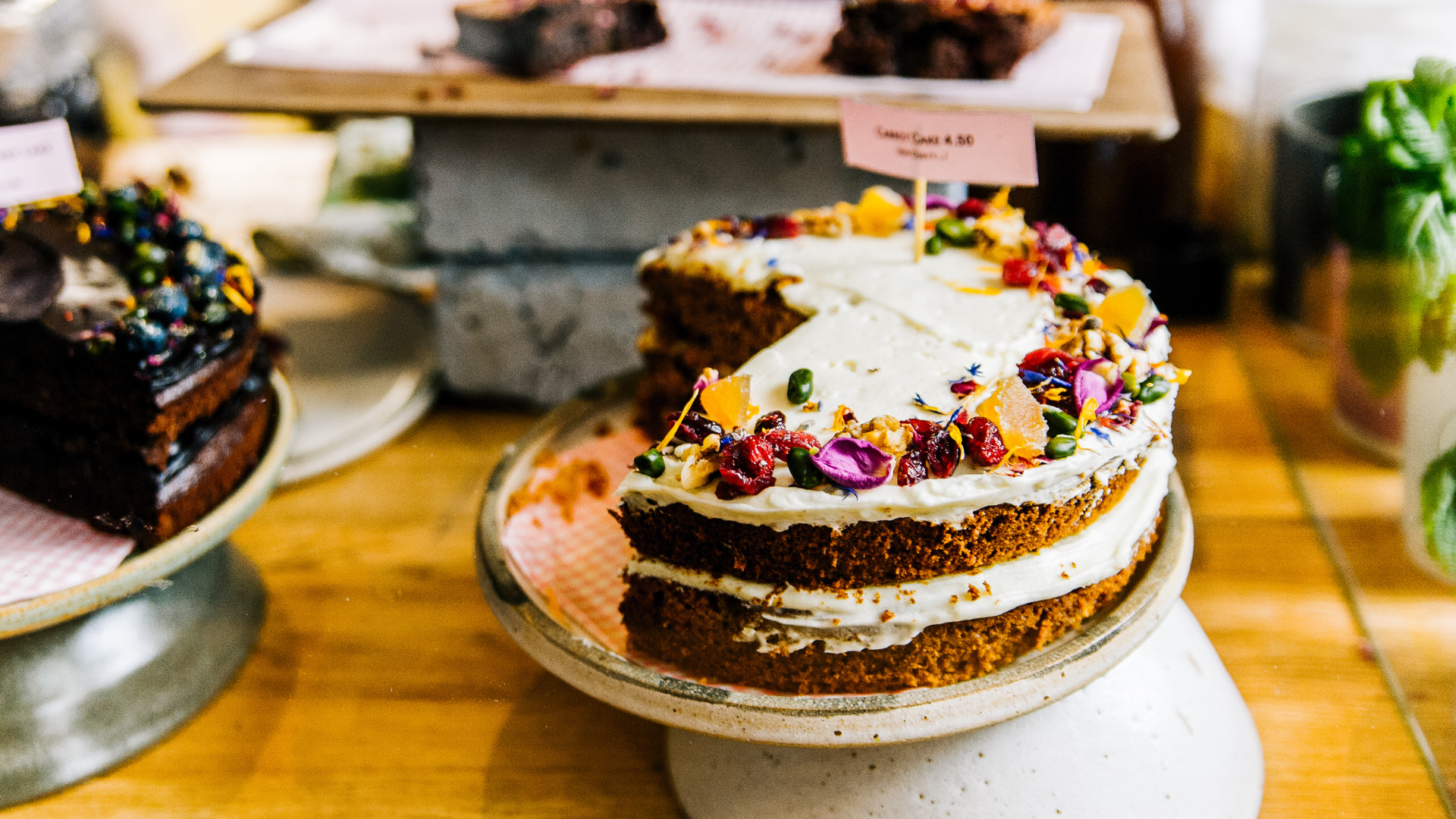A cake is a sweet, baked dessert usually composed of flour, sugar, eggs, butter, milk, baking powder, and flavorings. Cake can be made with leavening agents such as baking powder, baking soda, or yeast. Cakes are commonly divided into two categories: sponge cake or pound cake, a tender cake made with flour, eggs, sugar, and butter; and fruit cake, a cake made with dried fruit and nuts or soaked in spirits, rum, or sherry.
Baking a cake can be quite the process, but it is often the best part. Learning to bake a cake at home from scratch can seem intimidating, but it’s really not that difficult. All it takes is the right recipes and the right equipment. You can learn basic cake baking techniques from the internet for making beautiful and delicious homemade cakes. There is also the option of taking up online cake classes if you want to improve your baking technique or master a particular style of baking cakes. There is nothing quite like baking a cake from scratch, and if you love to bake, then you have probably tried several different recipes, looking for the one that will make you the tastiest, moistest, most delicious cake ever.
Gather Your Ingredients
Gather your ingredients, and get everything ready before you start to bake. By having all the ingredients ahead of time, you not only save time but can also prevent yourself from buying costly items.
Preheat The Oven To 340 °F (171 °C) And Grease And Flour The Cake Pan
When baking a cake, it’s important to keep a few basic steps in mind: preheat the oven, grease, and flour the cake pan, and use the correct ingredients. These steps will help you bake a cake that won’t burn or fall flat but one that’s evenly risen, moist, and flavorful.
Mix The Wet And Dry Ingredients In A Separate Bowl.
In baking, the wet ingredients and the dry ingredients must be mixed properly. The wet ingredients must be added before the dry ingredients, and the dry ingredients must be added after the wet ingredients. Mixing the ingredients in baking can be tricky since wet ones tend to lose their volume when mixed with dry ones. Additionally, mixing dry ingredients first helps since it helps them distribute evenly, and this prevents the occurrence of lumps. However, mixing dry ingredients first helps ensure that the mixture does not turn soggy.
Pour The Batter Into The Cake Pan
Pour the batter into the cake pan. It’s so simple, yet so very important. Baking is the science of manipulating heat, moisture, and time to create delicious things. The importance of pouring the batter into the cake pan is that a clear window gives you a good view of the batter and the cake pan. This helps you make sure your cake bakes evenly. The batter should fill the cake pan about halfway up. Leave about an inch of space from the top of the cake pan.
Put The Pan In The Oven And Bake The Cake For 30 Minutes
Placing a hot pan in the oven as a protective measure can end up causing much more trouble than it’s worth. This is because baking this cake at high heat on the stovetop will heat the oven to the maximum temperature and could cause your cake to burn. A safer solution is to place the pan in the oven and bake the cake for 30 minutes at 350 degrees
Take The Cake From The Oven And Let It Cool Before Adding Some Frosting.
Don’t be in a hurry to add the frosting. Once the cakes are cool, frost them, and let them cool even more. This is a tip that seems like a no-brainer, but some folks forget to do it. After you’ve taken the cake out of the oven and it’s cooled, you can decorate it with frosting. Some recipes suggest using softened butter, but you can also use margarine, shortening, or whipped cream cheese. And don’t forget to add sprinkles.
Baking a cake can be quite the process, but it is often the best part. Learning to bake a cake at home from scratch can seem intimidating, but it’s really not that difficult. All it takes is the right recipes and the right equipment.

